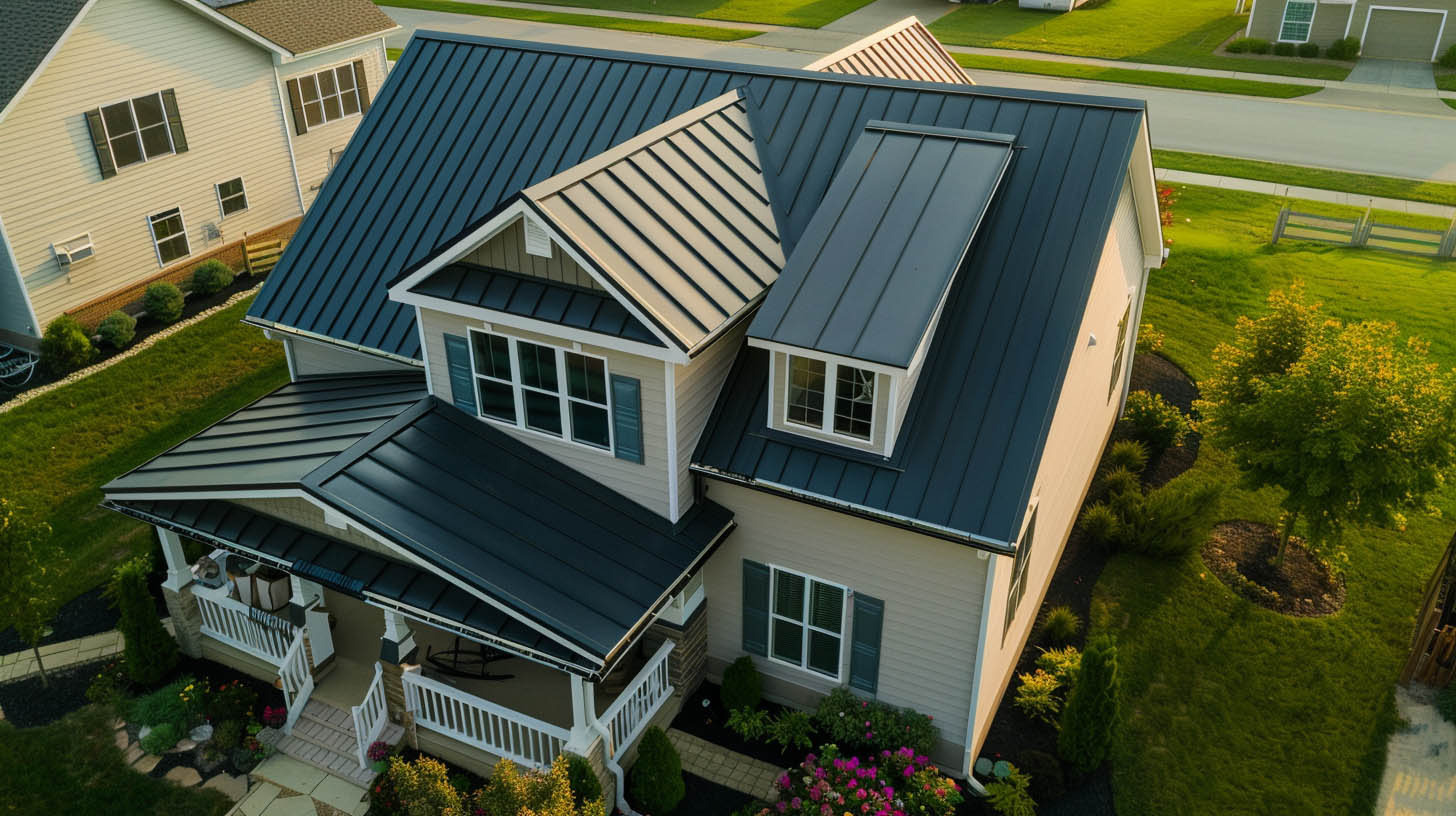At Trojan Roofing, we often field questions about the energy efficiency of metal roofs and whether they are a cost-effective solution for reducing HVAC costs. Here’s an in-depth look at why metal roofing is an excellent choice for those seeking to enhance their building’s energy performance.
Key Aspects of Metal Roof Energy Efficiency
Metal roofs are celebrated for their energy efficiency due to two primary properties: reflectivity and emissivity.
Reflectivity: Keeping the Heat Out
Reflectivity is the ability of a roof to reflect sunlight and heat away from a building, rather than absorbing it. Metal roofs are highly reflective, especially when finished in lighter colors like white, which can reflect a significant portion of solar radiation. This reflection helps maintain cooler internal temperatures during hot weather, reducing the need for air conditioning.
Emissivity: Releasing Heat Efficiently
Emissivity refers to a roof’s ability to emit absorbed heat back into the atmosphere rather than holding it in. Metal roofs excel in this regard, quickly releasing heat, which helps to stabilize indoor temperatures throughout the day and night.
Benefits of Metal Roofing
Reduced HVAC Costs
By reflecting solar heat and emitting absorbed energy, metal roofs can significantly lower HVAC costs. Studies and data from the Metal Roofing Alliance suggest that metal roofing can lead to energy savings of up to 40% during summer months. In winter, the same properties help keep warm air inside, reducing heating costs.
Durability and Longevity
Metal roofs are not only energy-efficient but also extremely durable. They can last 40 to 100 years with minimal maintenance, compared to asphalt shingles which often require replacement every 15 to 30 years. The longevity of metal roofs makes them a more sustainable and cost-effective roofing solution.
Environmental Benefits
Metal roofing is recyclable at the end of its life, making it a more environmentally friendly option than many traditional roofing materials. The production of metal roofing also tends to have a lower environmental impact due to the recyclability of the materials involved.
Comparing Metal Roofs to Other Roofing Materials
Asphalt shingles, while initially less expensive, often do not provide the same energy efficiency or durability as metal roofs. They are prone to damage from severe weather and can degrade more quickly over time, leading to higher overall maintenance and replacement costs.
Incentives for Energy Efficiency
While specific federal incentives for metal roofs have phased out, many local and state incentives still exist to promote energy-efficient roofing. These can include rebates, reduced utility rates, or tax credits, depending on the area and the specific programs available.
Conclusion
Investing in a metal roof can provide substantial benefits in terms of energy efficiency, reduced HVAC costs, and overall sustainability. The initial cost is offset by the long-term savings and minimal maintenance requirements, making metal roofs an excellent investment for both residential and commercial properties.
For a comprehensive look at metal roofing accents and their advantages, click here.

